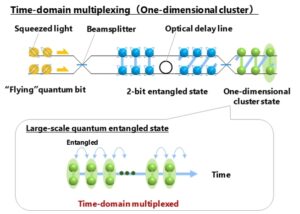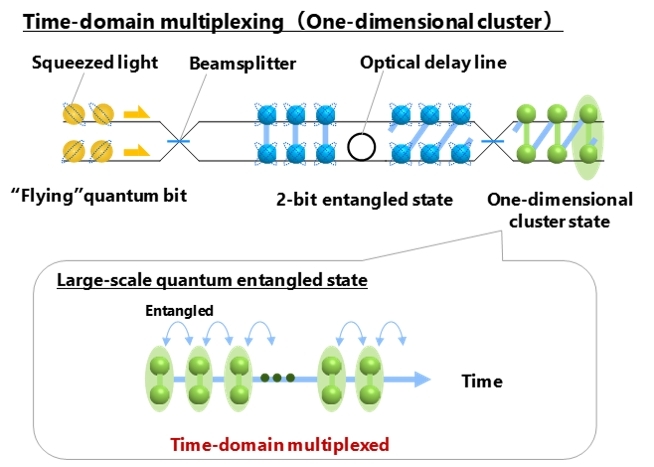
NTT Corporation in cooperation with the University of Tokyo and RIKEN has developed an optical fiber-coupled quantum light source, which is a key technology for realizing a fault-tolerant large-scale universal optical quantum computer, according to a statement.
Quantum computers are being researched and developed worldwide because they are capable of parallel computational processing using unique phenomena to quantum mechanics such as quantum superposition states and quantum entanglement states. While various methods are being considered, the optical quantum computer using photons has many advantages. For example, it does not require the low temperature and vacuum equipment required by other methods, which makes it compact. Also, by creating a time-domain-multiplexed quantum entangled state, the number of qubits can be easily increased without micro integration of circuits or parallelization of equipment. In addition, high-speed computational processing is possible thanks to the broadband nature of light. Furthermore, quantum error correction has been theoretically shown to be possible by using continuous variables of light that take advantage of the parity of photons, rather than by using discrete variables that use the presence or absence of photons. This method has a high compatibility with optical communication technologies such as low-loss optical fibers and highly functional optical devices, which makes dramatic progress toward the construction of universal large-scale fault-tolerant optical quantum computers.
To realize optical quantum computers, one of the most important components is a quantum light source generating squeezed light, which is the origin of quantum nature in optical quantum computers. Especially, an optical fiber-coupled quantum light source is highly desired. Squeezed light is a non-classical light that has an even number of photons and squeezed quantum noise and is used to generate quantum entanglement. In addition, squeezed light plays an extremely important role in quantum error correction, since quantum error correction is made possible by utilizing the parity of the number of photons. To achieve a large-scale universal fault-tolerant optical quantum computer, we need a fiber-coupled squeezed light source with highly squeezed quantum noise and photon number parity that is maintained even in high-photon-number components. For example, a squeezing level of over 65% is required to generate time-domain multiple quantum entanglement (two-dimensional clustered states) that can be used for large-scale quantum computation. However, such devices have never been developed because of the difficulty of generating the squeezed light with high quality.
In this study, we have developed a new optical fiber-coupled quantum light source that operates at optical communication wavelengths. By combining it with optical fiber components, we successfully generate continuous-wave squeezed light with more than 75% squeezed quantum noise with more than 6 THz sideband frequency even in an optical fiber closed system for the first time. This means that the key device in optical quantum computers has been realized in a form that is compatible with optical fibers while maintaining the broadband nature of light. This will enable the development of an optical quantum computer in a stable and maintenance-free system using optical fibers and optical communication devices. This will greatly advance the development of rack-sized large-scale optical quantum computers.

The results of this research were published in the American scientific journal Applied Physics Letters. This paper has also been selected as an “Editor’s Pick” paper. A part of this research was supported by the Japan Science and Technology Agency (JST) Moonshot Research and Development Program.
Summary:
- We have developed an optical fiber-coupled high-performance squeezed light source module, which will be a key device to realize a rack-sized optical quantum computer.
- By using the developed fiber-coupled quantum light source module and optical communication devices, continuous-wave squeezed light with quantum noise suppressed by more than 75% over a wide bandwidth of more than 6 THz has been successfully generated in an optical fiber closed system for the first time.
- This achievement makes it possible to develop an optical quantum computer on a realistic scale in a stable and maintenance-free optical system using optical communication devices and will greatly advance the development for a fault-tolerant large-scale universal optical quantum computer.
For more market insights, check out our latest quantum computing news here.

















